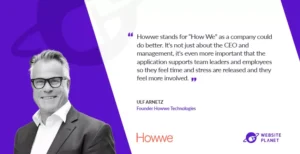Becoming relentless means sticking to your strategic acceleration without letting setbacks stop you. If you’ve been following our series, you’re well-equipped with tools to propel your strategy. Now, it’s time to shift your focus to sustaining this progress and building the resilience to keep moving forward.
Keys to Relentless Strategy Execution:
- Commit Time and Focus – Reserve time weekly. Discipline drives momentum.
- Hold Acceleration Meetings – Weekly, 15-minute check-ins to energize the team and align on priorities.
- Measure Progress – Track gains against historical metrics and visualize your trajectory.
- Reinforce Goals – Regularly remind the team why the work matters, celebrate wins, and stay outcome-focused.
- Address Setbacks Early – If progress slows, schedule follow-ups. Understand needs and remove obstacles.
- Celebrate and Reward – Recognize milestones with rewards that go beyond results, creating a positive atmosphere.
- Keep It Positive – Leadership enthusiasm is contagious. Show excitement and model commitment.
- Reward Acceleration – Don’t just reward the outcome; celebrate the acceleration efforts that drive it.
We believe in the power of hard work and patience. Sticking with acceleration efforts consistently, even when results start to appear, is what sets relentless organizations apart.
Building Momentum Toward Your Most Important Goals (MIGs)
As your key activities gain speed and produce results, consider: are you staying on track, or losing focus? We’ve seen companies start strong, only to relax once the initial progress is visible. Don’t make that mistake—sustain acceleration weekly, especially in good times.
Behavioral change takes time. Shifting the organizational mindset toward strategy work requires small, consistent actions. This change compounds into a larger, impactful transformation.
What’s Next After Reaching Your MIGs?
Achieving your Most Important Goals doesn’t mean it’s time to coast. Change is constant, and new goals are always on the horizon. Identify the next MIGs and approach them with the same acceleration method. With this experience, the next cycle will be faster, as your teams know the process and are ready to execute.
Why Relentless Strategy Acceleration Isn’t a Project—It’s a Habit
Companies that adopt strategy acceleration recognize it’s not a one-time project. It becomes a powerful, continuous work habit that strengthens resilience. Change becomes natural, and the organization grows adept at adapting.
For boards and CEOs, there will always be two main challenges—thus, a perpetual need for critical initiatives. A proactive, relentless approach ensures continuous improvement.
The Agile Edge: Strategy Acceleration as a Competitive Advantage
Organizations that sustain strategy acceleration naturally evolve into agile entities. The benefits of agility, initially seen in software development, are now clear for all businesses. Becoming “business agile” provides a competitive edge. Embrace this mindset—where strategy acceleration and agility align, transformation flourishes.
Learn more about how you accelerate the execution of your strategy in our blog series.
Summary
We have now covered how to become relentless as well as the whole strategy acceleration process.
This blog post discusses the importance of being relentless in executing a strategy, which means to keep going despite setbacks and finding the motivation to continue improving. The post offers tips on how individuals and organizations can become relentless, including reserving time in the schedule, holding regular acceleration meetings, measuring progress against historical figures, reminding the team about set goals, scheduling follow-up meetings when progress is slow, rewarding acceleration work in different ways, and creating a positive atmosphere around the work. The post also emphasizes the need to continue the momentum even after achieving the most important goals and to use the same method for subsequent goals. The process of becoming relentless takes time, but it can become part of a company’s DNA, resulting in faster behavioral changes and a positive attitude towards strategy work.
If you’ve read all articles in this blog series based on the book Strategy Acceleration you have learned a whole new way of working in order to execute strategies and to keep the work going and on track. We hope that you have become curious and feel an urge to try. We think that the words strategy acceleration by now feels natural and familiar to you (the old way probably feels dusty and outdated). We also hope that you see and feel that this method could help you in an area that many feel is complicated — but that does not have to be.





